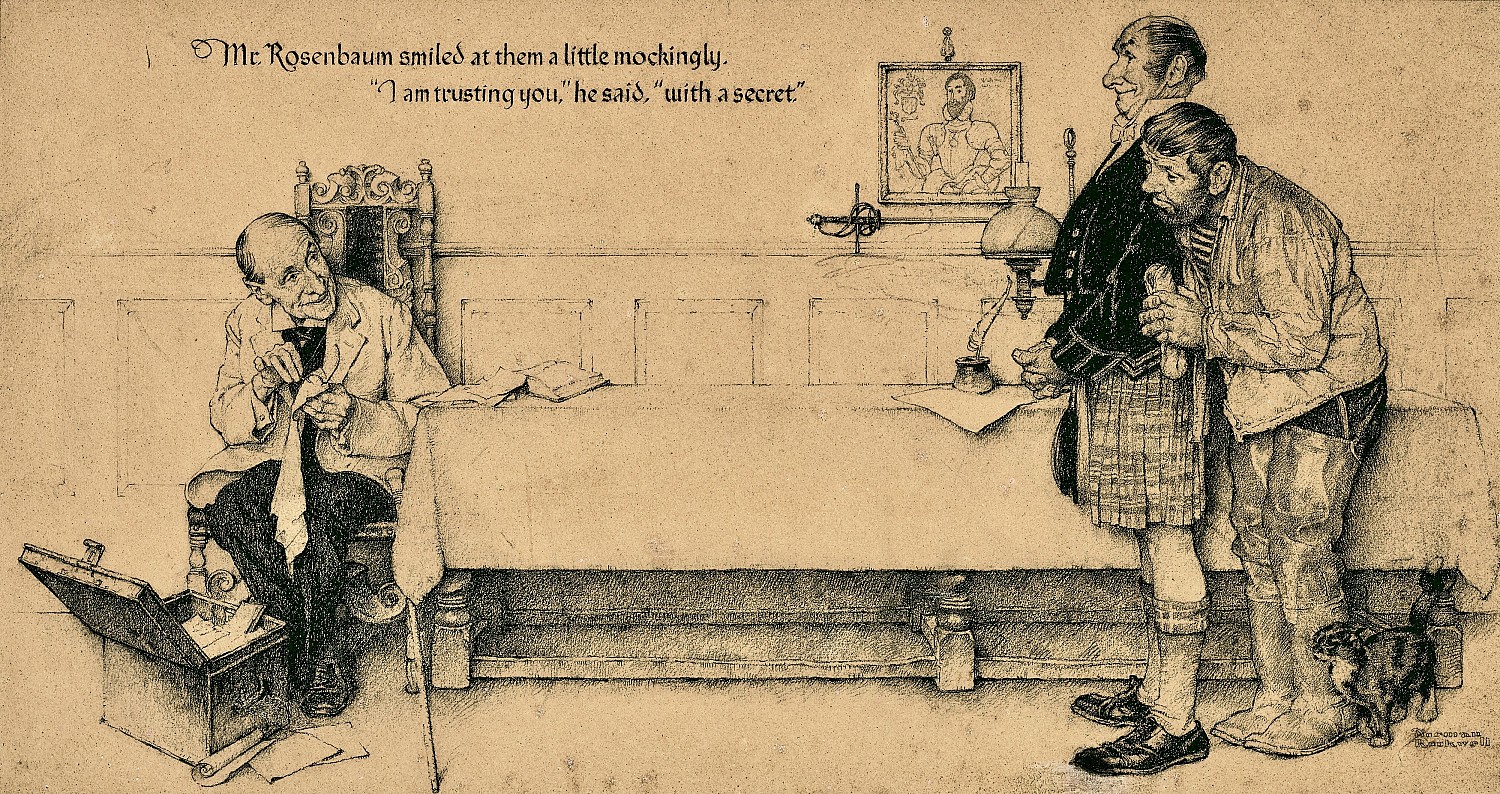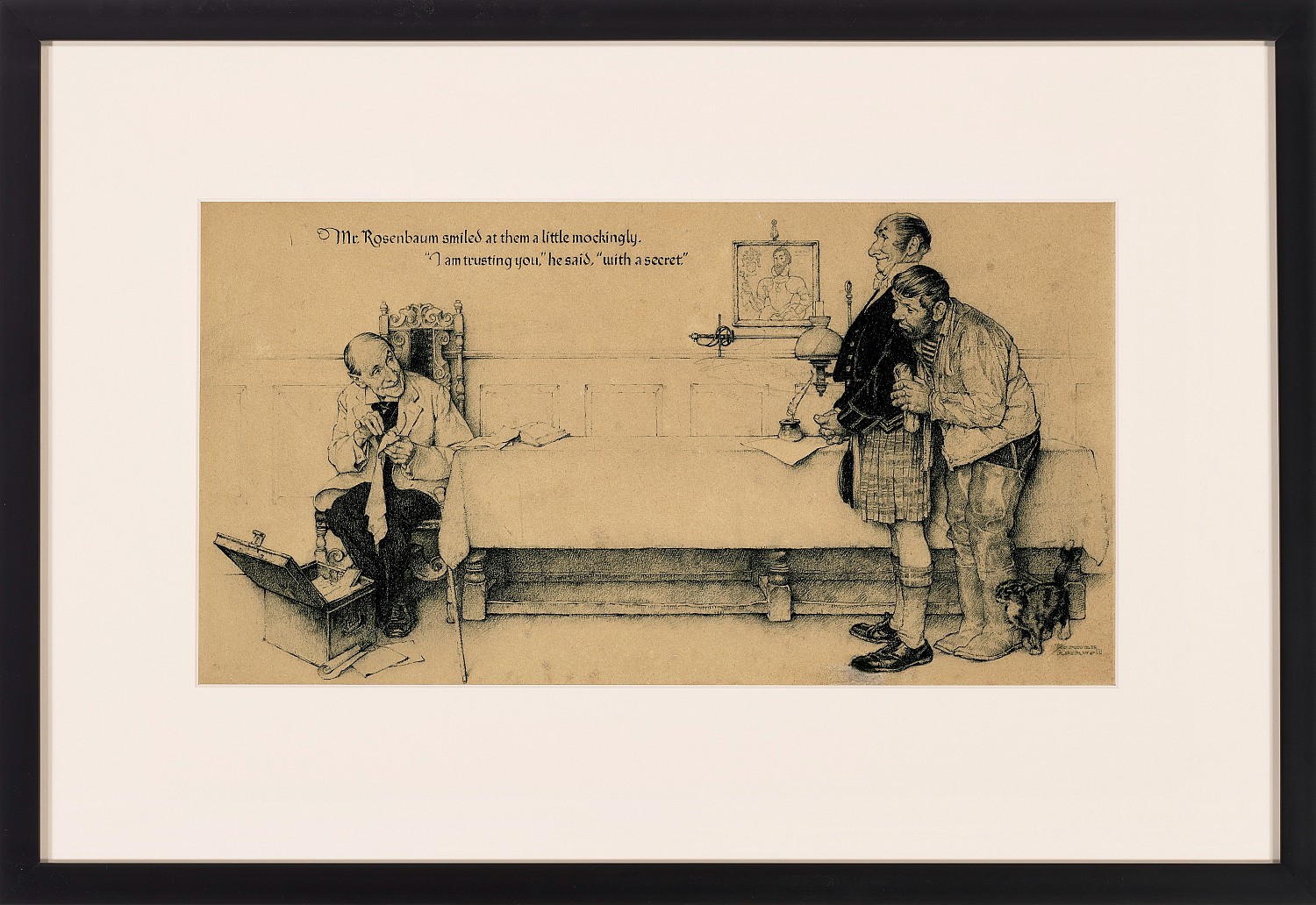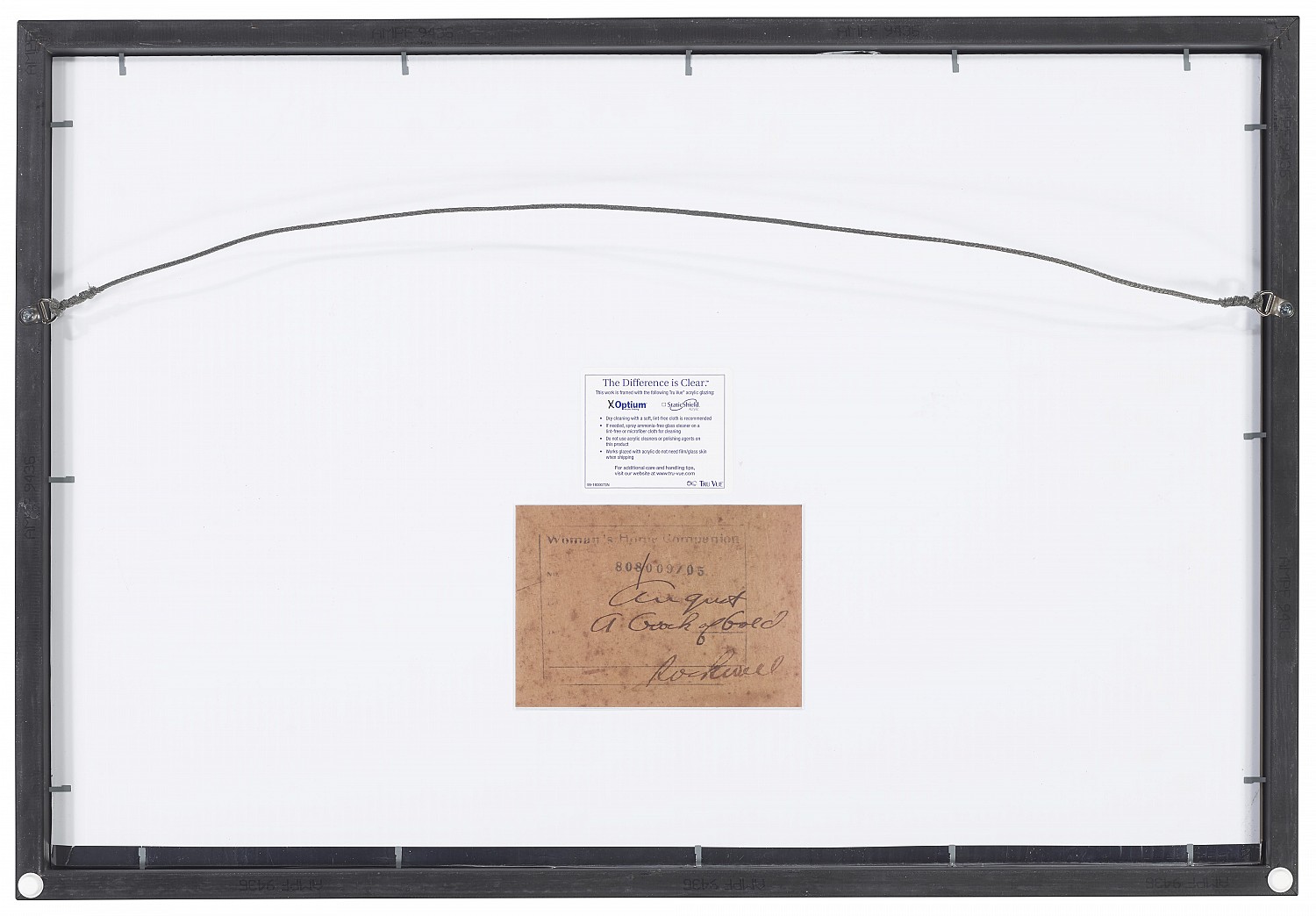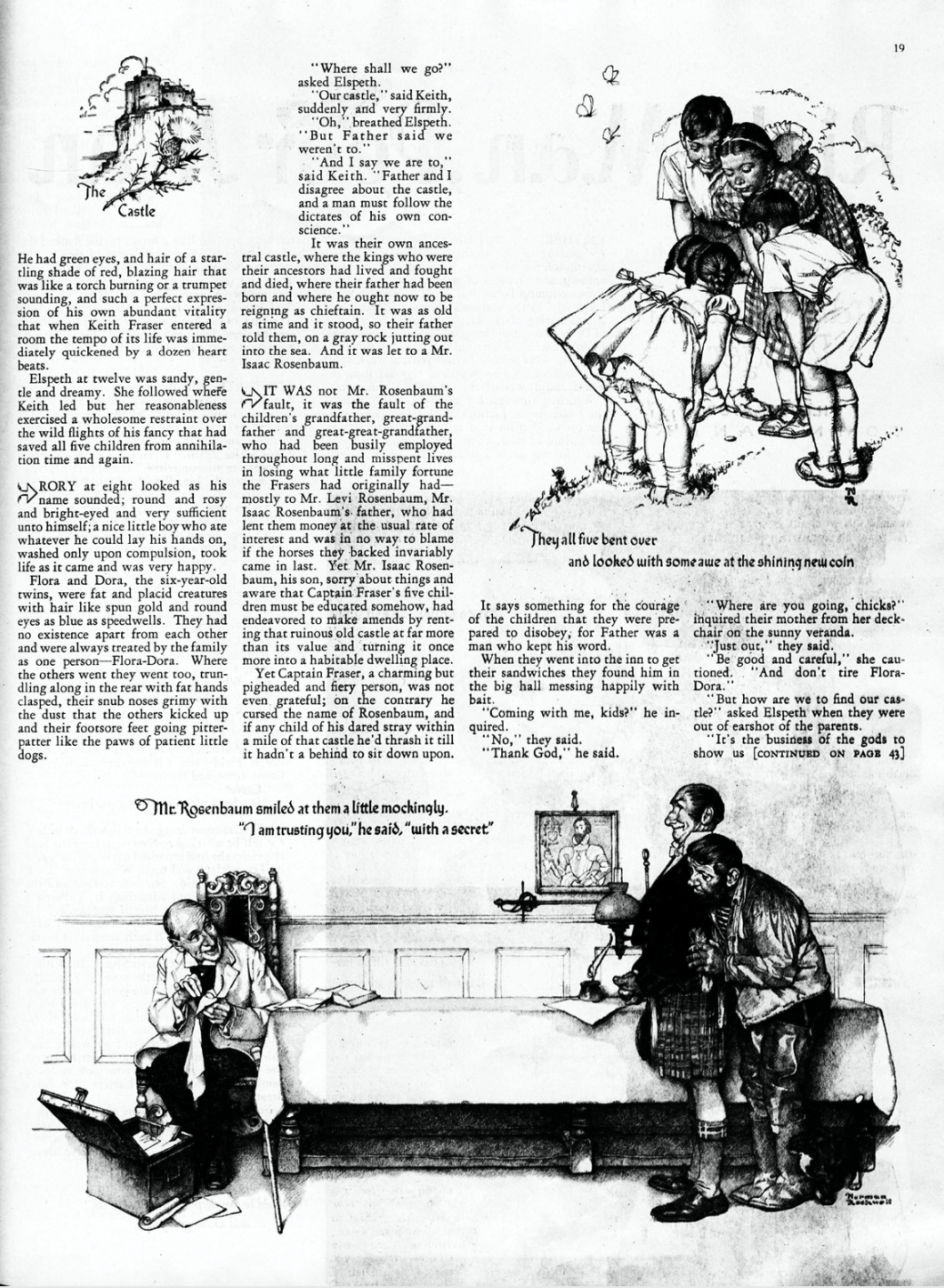"A Crock of Gold" Lot no. 4347
By Norman Rockwell (1894-1978)
1938
9.5" x 17.75"
Charcoal on Paperboard
Signed Lower Right
REQUEST PRICE
PURCHASE REQUEST
Signed Lower Right by artist
The present work was published as an illustration for Elizabeth Goudge's short story "A Crock of Gold" in the August 1938 issue of Woman's Home Companion. The story follows a family of five children on their summer vacation in Scotland. The kids set off in search of the ancestral castle where their father grew up, despite his warning against it and stories of the despicable current inhabitant Isaac Rosenbaum. Along the way, the children meet a kind old man, a self-proclaimed "crock," who explains that he lives in a nearby castle and welcomes them in for a tour and a meal. After friendship and trust develops, he reveals himself as the infamous Isaac Rosenbaum. To his delight, the children accept him on their own judgement, realizing their father's sore misrepresentation of his character. The present work illustrates the moment when Rosenbaum decides to write the children into his will and summons two witnesses, asking them to keep the decision a secret. The story ends after his death, with the children living happily in the castle and remembering him as "the crock of gold."
Literature: E. Goudge, A Crock of Gold, Woman's Home Companion, August 1938, p. 18, illustrated. L.N. Moffatt, Norman Rockwell: A Definitive Catalogue, vol. II, Stockbridge, Massachusetts, 1986, p. 817, no. S715, illustrated.
Explore related art collections: Black & White / Magazine Stories
See all original artwork by Norman Rockwell
ABOUT THE ARTIST
The pictures of Norman Perceval Rockwell (1894-1978) were recognized and enjoyed by almost everybody in America. The cover of The Saturday Evening Post was his showcase for over forty years, giving him an audience larger than that of any other artist in history. Over the years, he depicted there a unique collection of Americana, a series of vignettes of remarkable warmth and humor. In addition, he painted a great number of pictures for story illustrations, advertising campaigns, posters, calendars and books.
As his personal contribution during World War II, Rockwell painted the famous “Four Freedoms” posters, symbolizing for millions the war aims as described by President Franklin Roosevelt. One version of his “Freedom of Speech” painting is in the collection of the Metropolitan Museum of Art.
Rockwell left high school to attend classes at the National Academy of Design, and later studied under Thomas Fogarty and George Bridgeman at the Art Students League in New York. His two greatest influences were the completely opposite titans Howard Pyle and J.C Leyendecker.
His early illustrations were done for St. Nicholas magazine and other juvenile publications. He sold his first cover painting to the Post in 1916, and ended up doing over 300 more. Presidents Eisenhower, Kennedy, and Johnson sat for him for portraits, and he painted other world figures, including Nassar of Egypt and Nehru of India.
An important museum has been established in Stockbridge, Massachusetts, where he maintained his studio. Each year, tens of thousands visit the largest collection of his original paintings extant.







